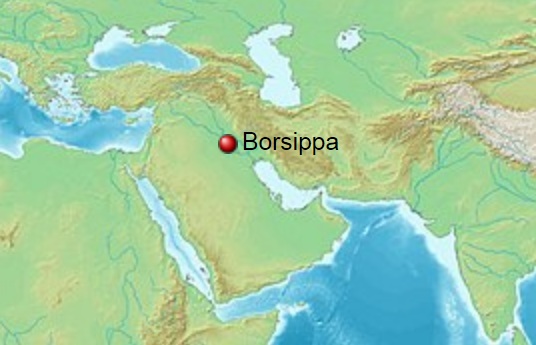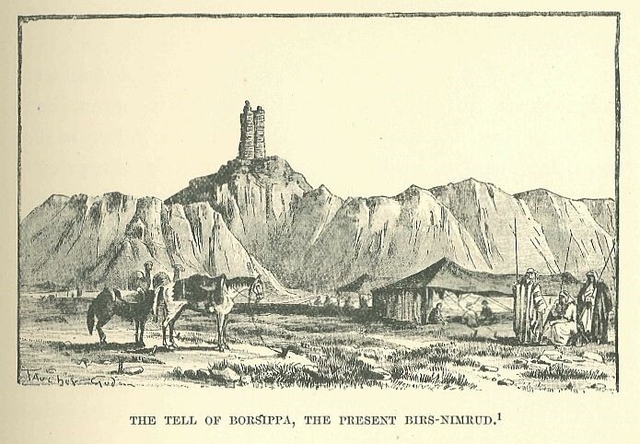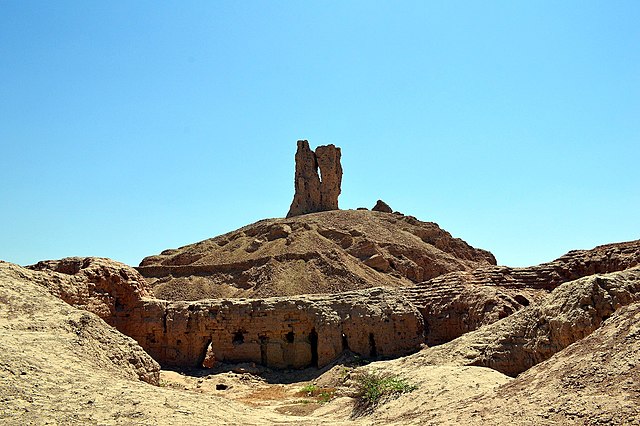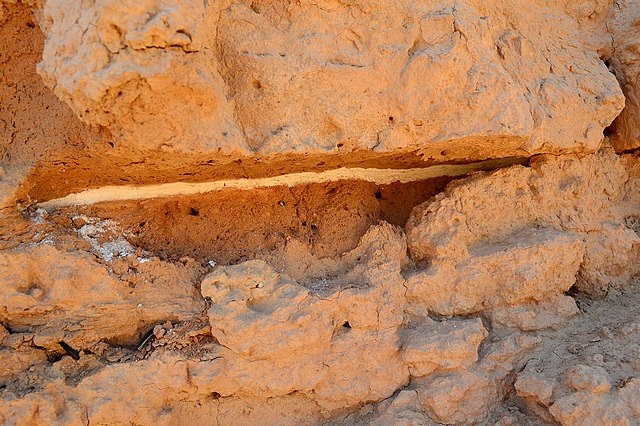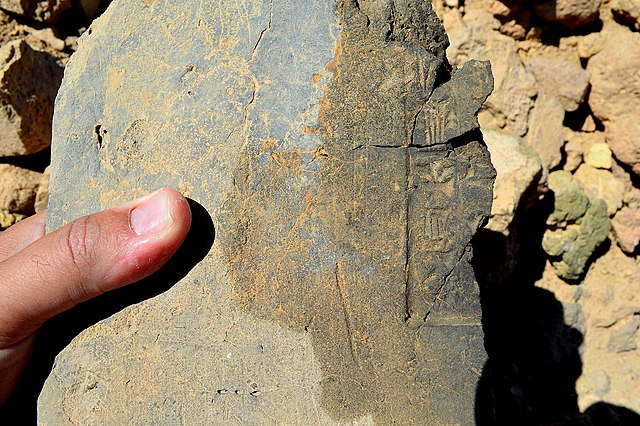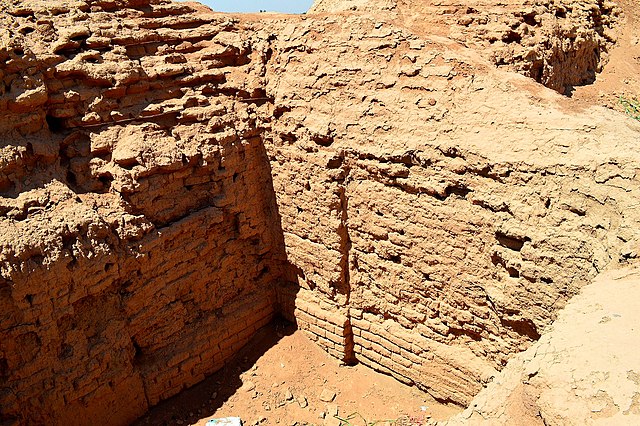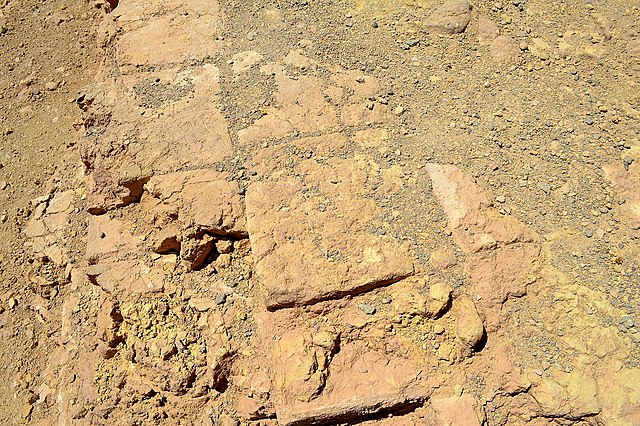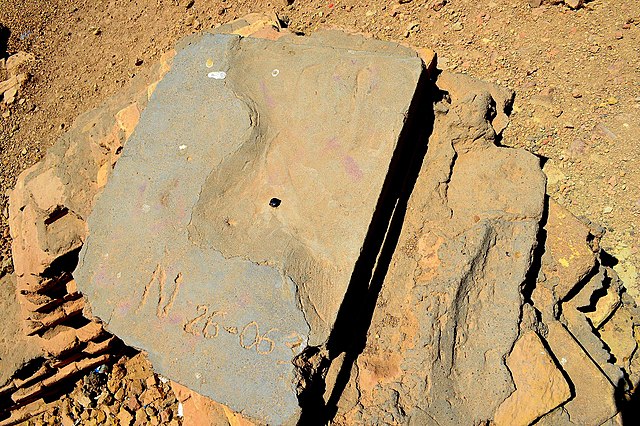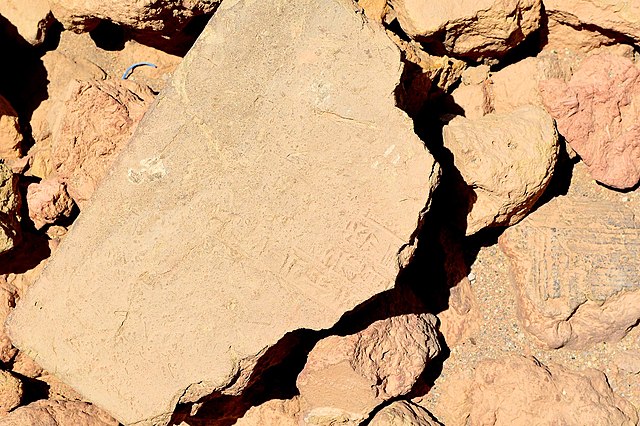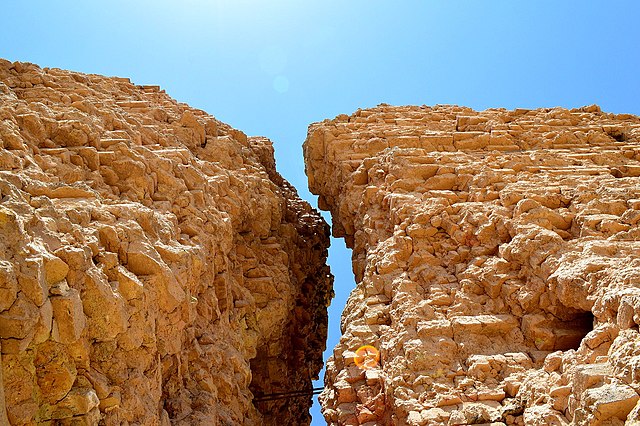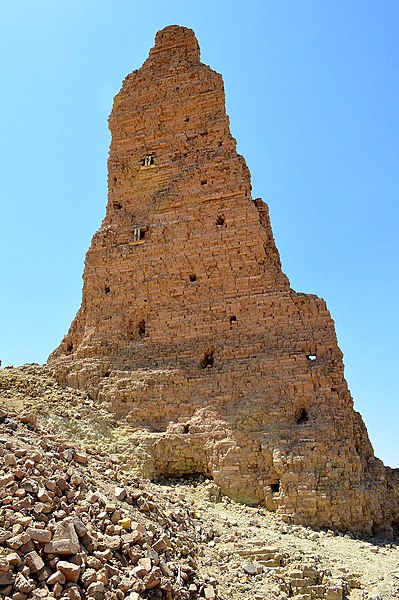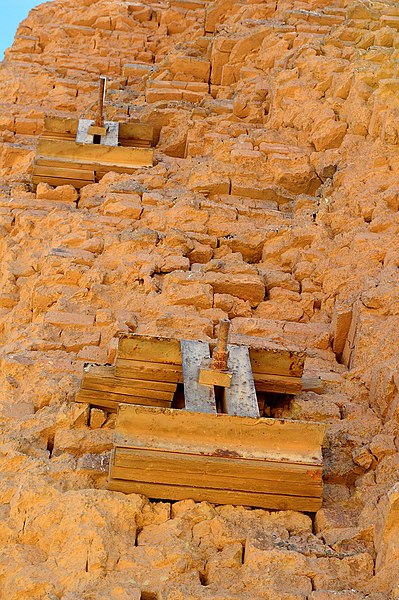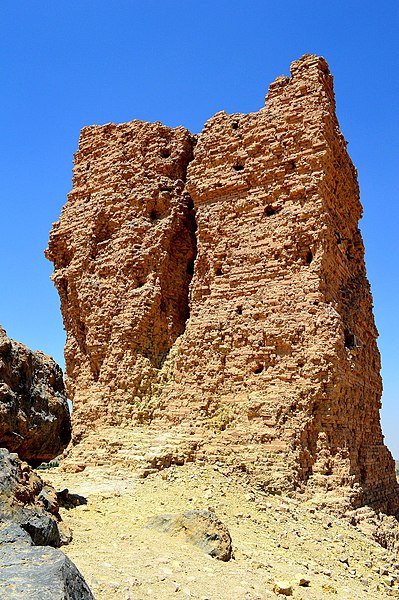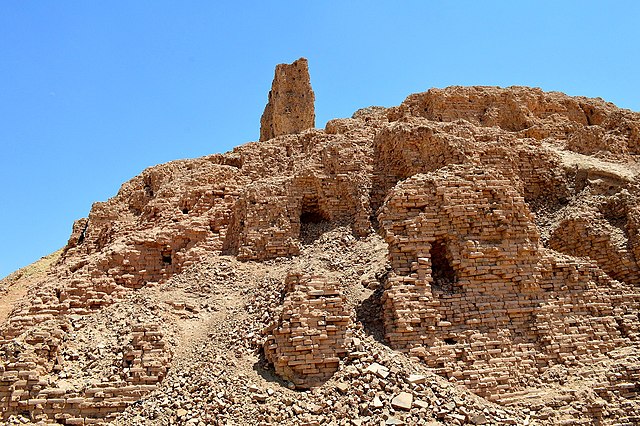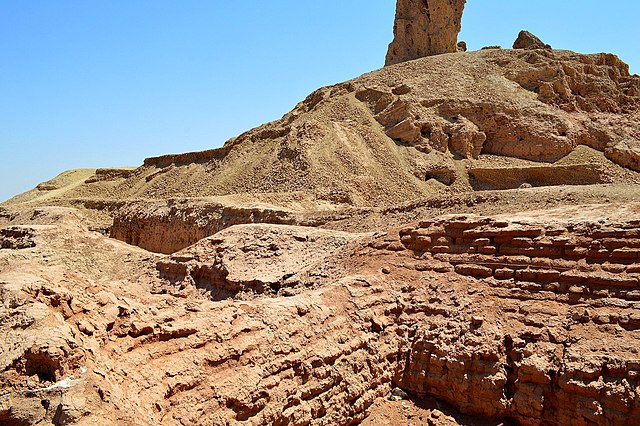
| BORSIPPA
Borsippa, Iraq
The mountain of Borsippa (in antiquity Babel). Drawn by Faucher-Gudin Borsippa (Sumerian: BAD.SI.(A).AB.BAKI; Akkadian: Barsip and Til-Barsip) or Birs Nimrud (having been identified with Nimrod) is an archeological site in Babylon Province, Iraq. The ziggurat is today one of the most vividly identifiable surviving ones, identified in the later Arabic culture with the Tower of Babel. However, modern scholarship concludes that the Sumero-Akkadian builders of the Ziggurat in reality erected it as a religious edifice in honour of the local god Nabu, called the "son" of Babylon's Marduk, as would be appropriate for Babylon's lesser sister-city.
Borsippa was an important ancient city of Sumer, built on both sides of a lake about 17.7 km (11.0 mi) southwest of Babylon on the east bank of the Euphrates.
History
:
The Jewish historian, Josephus, mentions the city in relation to the war between Cyrus the Great and Nabonnedus. The temple to Nabu at Borsippa was destroyed in 484 BC during the suppression of a revolt against the Achaemenid king Xerxes.
Archaeology :
Ruins of the ziggurat and temple of Nabu at Borsippa, Babylonia, Iraq In 1854, work at Borsippa was conducted under the direction of Henry Creswicke Rawlinson, with most of the actual digging done by his subordinates. Rawlinson personally uncovered the foundation prisms from Nebuchadnezzar II's restoration on the Nabu temple. Between 1879 and 1881 the site was excavated by Hormuzd Rassam for the British Museum. He concentrated primarily on Ezida, the temple of Nabu. In 1902, Robert Koldewey worked at Borsippa during his main effort at Babylon also mainly on the Nabu temple.
Since 1980, the Austrian team from the Leopold-Franzens-Universität Innsbruck led by Helga Piesl-Trenkwalder and Wilfred Allinger-Csollich excavated for sixteen seasons at the site. Early work concentrated on the large ziggurat E-ur-imin-an-ki and later on the Nabu temple. Excavations can currently not be carried out due to political events. The elaboration of the results of excavations within the project "Comparative studies of Borsippa - Babylon" are conducted.
Many legal administrative and astronomical texts on cuneiform tablets have originated at Borsippa and have turned up on the black market. Archives began to be published in the 1980s. An inscription of Nebuchadnezzar II, the "Borsippa inscription," tells how he restored the temple of Nabu, "the temple of the seven spheres," with "bricks of noble lapis lazuli." that must have been covered with a rich blue glaze, surely a memorable sight. The Austrian archeologists have determined that Nebuchadnezzar's ziggurat encased the ruins of a smaller tower from the second millennium BC. When it was completed it reached a height of 70 meters, in seven terraces; even in ruin it still stands a striking 52 meters over the perfectly flat plain. Some tablets have been recovered, but archeologists still hope to uncover a temple archive of cuneiform tablets, of which there were some copies in ancient Assyrian libraries. An inscribed foundation stone has been recovered, which details Nebuchadnezzar's plan to have the Borsippa ziggurat built on the same design as that at Babylon, of which only the foundation survives. Nebuchadnezzar declared that Nabu's tower would reach the skies, another inscription states. The reconstruction under the patronage of Bel-Marduk is summarized on a cylinder in Akkadian of Antiochus I, an example of the region's remarkable cultural continuity.
Gallery :
The original ancient gypsum plaster between mud-bricks, Borsippa, Babel, Iraq
Stamped mud-brick from the ziggurat and temple of Nabu at Borsippa, Iraq, 6th century BC
Ruins around the ziggurat and temple of the god Nabu at Borsippa, Babel Governorate, Iraq
Original tiles at the upper surface of the ziggurat and temple of Nabu at Borsippa, Iraq
The upper surface of the ruins of the ziggurat and temple of Nabu at Borsippa, Iraq
Modern cement covering ancient bricks at the upper surface of the ziggurat and temple of Nabu, Borsippa, Iraq
Ruins of the lower part of the ziggurat and temple of Nabu at Borsippa, Babel Governorate, Iraq
Stamped mud-brick from the ziggurat and temple of Nabu, Borsippa, Iraq
The upper part of the Tongue Tower of the ziggurat and temple of Nabu at Borsippa, Iraq
The ruins of the so-called Tongue Tower of the ziggurat and temple of the god Nabu at Borsippa, Babel Governorate, Iraq. 6th century BC
The ruins of the so-called Tongue Tower of the ziggurat of Nabu at Borsippa, Babel Governorate, Iraq. 6th century BC
The ruins of the so-called Tongue Tower of the ziggurat and temple of Nabu at Borsippa, Iraq
Ruins of the ziggurat and temple of god Nabu, Borsippa, Babel Governorate, Iraq, sixth century BC
Ruins of the ziggurat and temple of god Nabu at Borsippa, Babel Governorate, Iraq
Source :
https://en.wikipedia.org/ |
